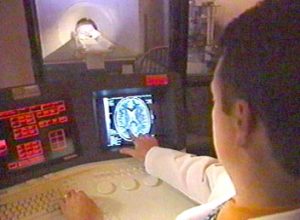How to help an attorney handle a personal injury case: part 2
 Glenn Treeline (not his real name) sat in a truck next to the side of a road taking a break from driving. A driver hit the back of Glenn’s truck, throwing him through the windshield. The rescue squad responding to the scene found Glenn was bleeding from his head injuries and felt dazed. The squad focused on managing the trauma patient.
Glenn Treeline (not his real name) sat in a truck next to the side of a road taking a break from driving. A driver hit the back of Glenn’s truck, throwing him through the windshield. The rescue squad responding to the scene found Glenn was bleeding from his head injuries and felt dazed. The squad focused on managing the trauma patient.
In the emergency department, the staff got a call from the squad telling them that they were coming in with a trauma patient.
Preparation for Managing the Trauma Patient
Managing the trauma patient started with preparation. The staff prepared the trauma room for arrival of the patient. They got out IV poles and IV solutions. The Charge Nurse or the Resource Nurse assigned roles to the staff in the trauma room, so everybody was very clear on their role in the trauma room.
A nurse was assigned to be the recorder who would do all of the documentation. There was a medication nurse. A nurse was assigned to be a runner to take specimens to the lab and bring blood and equipment. Another person was assigned to do CPR, and a different person to insert IVs and a Foley catheter.
Glenn arrived strapped to a board with a cervical collar around his neck. Glenn had head, neck and upper body pain. The staff did a CT scan and picked glass out of his scalp. He recovered from his injuries after a brief admission and a course of physical therapy. 
Litigation after Acute Management of the Trauma Patient
The plaintiff attorney asked me to summarize the medical records of this unfortunate man. He told me, “The defense attorney is convinced the patient was shooting up while sitting in his car. His labs came back positive for opiates.”
In part 1 of this blog post, I talked about the importance of being detailed oriented.
What does a detail oriented LNC do with this information? What would you ask?1. What pain medication did Glenn get in the ED?
2. When was it given?
3. When were the lab tests done?
I discovered by doing a timeline that Glenn received Morphine at 9:05 AM. Then the ED nurse inserted a Foley and withdrew blood for testing 20 minutes after Glenn received the Morphine.
I assured my client that Glenn’s Morphine dose was the most likely cause of the opiates found in his system.
As experienced ED nurse Tammy Murphy says, ED nurses need to medicate trauma patients right away to get them comfortable enough to be able to do very important testing on them. The nurses aren’t thinking about litigation when they’re medicating patients. They are thinking about making sure their patient is taken care of. Managing the trauma patient’s pain takes priority.
It is your job as an LNC to carefully reconstruct the medical care events to verify or refute a theory that the patient had opiates in his system before the crash.
Pat Iyer MSN RN LNCC wrote this post, drawing on a Legal Nurse Podcast she completed with Tammy Murphy. Listen to their conversation about the care of trauma patients at this link on podcast.legalnursebusiness.com.
